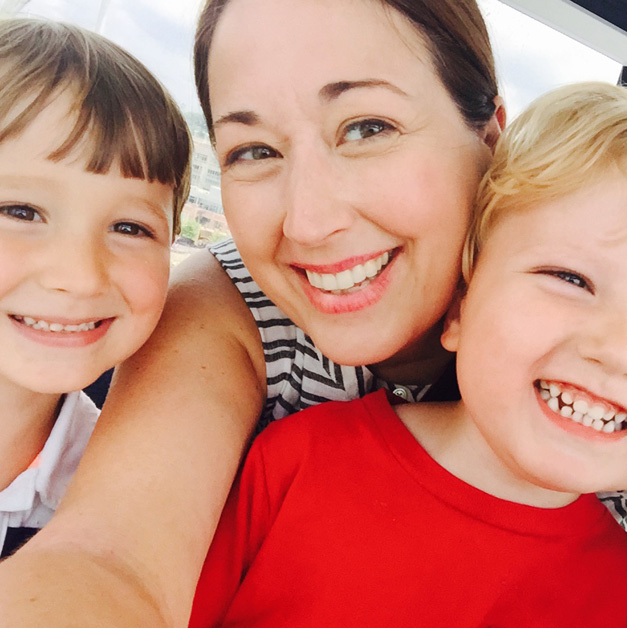The Hollywood blockbuster, The King’s Speech, illustrated – with acute accuracy – the impact of stuttering on self-worth, friendships, and daily activities. Individuals who stutter face speech challenges that fluent speakers take for granted. The boy who must cope after a caller hangs up on him because he cannot say hello; the woman who does not get a promotion because she cannot speak fluently to her team; the man who takes a factory job so he does not have to speak with others; the girl who orders vanilla ice cream because she knows she cannot say chocolate; the child who responds, “I don’t know,” to the teacher’s question because he cannot answer fluently. Stuttering interferes with school, work, and social interactions. In addition, some individuals who stutter report fear or anxiety about speaking and frustration about the time and effort required to speak.
What is stuttering?
Stuttering is defined as an abnormally high frequency and/or duration of stoppages in the forward flow of speech. On the opposite speech continuum, fluency is the rate, rhythm, and ease with which a person speaks. Please note that everyone experiences dysfluent speech at times. This is normal. Children -when tired- become dysfluent. Adults -when nervous or stressed- become dysfluent. In fact, after reading this article, you will notice dysfluencies in your speech. If the dysfluencies become commonplace, struggled, and/or avoided, a stuttering classification is possible.
As a parent and a speech therapist, I readily noticed dysfluencies in both of my children’s speech (more prominent with my son) during the preschool years. The dysfluencies started around the age of 2.5-3 years. And, interestingly, research states that the majority of stuttering begins between speech onset and puberty, most often between the ages of 2 and 5 years. You may be thinking, “I bet you were worried?” And, if you knew me, you would know that I have the ability worry about anything-literally. I fretted over my daughter’s name, Rayna, starting with an /r/ for years (it is a family name). The phoneme /r/ is a tricky phoneme to correct. Stuttering, however, I was not distressed about. This is why…
First off, the prevalence of stuttering (total number of stuttering cases at a specified time) is extremely low, 1% in pre-pubertal school children. The incidence of stuttering (the total number of people who have stuttered at some time in their lives) is 5%. The difference between the incidence and the prevalence indicates that most people recover from stuttering episodes.
Secondly, preschool children typically demonstrate some word and phrase repetitions, interjections, and revisions in their speech. In other words, dysfluency is the norm for young children acquiring language complexity. In order to express thoughts and ideas, one must process information relevant to the topic, organize thoughts into a grammatically correct form, and establish accurate semantics (vocabulary). Dysfluencies can “buy time” for the novice speaker.
The following list represents typical dysfluencies seen in preschool-aged children:
Repetitions – sound (h-h- hat), syllable (buh-buh- boy), or one-syllable words. (I-I-I was going).
Interjections- use of “fillers” (Let’s get – um- um – you know – pizza tonight for hmmm dinner).
Revisions – changing the sentence/phrase structure (I eat- I ate an apple).
Lastly, incipient stuttering has different characteristics than typical dysfluencies. It is characterized by more within-word dysfluencies, sound prolongations, and broken words. Charles Van Riper, a renowned speech therapist who also stuttered, stated, “It is the broken word that characterizes the majority of the stutterer’s difficulty.”
The following is a list of atypical dysfluencies:
Blocks/Broken words – stoppage of airflow or speech (Yesterday, I w—-ent to school.)
Prolongations – sustained articulation of a sound for lengthy amount of time (sssssssee ssssssssaw.)
Incomplete phrases – the thought and content of an utterance are not completed, and it is not an instance of phrase repetition (She was-and after she got there, he came)
Since most children who stutter, begin so around 2 ½ years of age, you may find yourself wondering what you can or should do as a parent if you notice your child’s speech becoming “bumpy.” Here is my professional advice.
If the dysfluencies fall mainly into the typical dysfluency examples and your child is not showing signs of struggle, I suggest you focus on indirect approaches to fluency. These include slowing your rate of speech down when speaking to your child, maintaining eye contact during dysfluencies, toning down excessive stimulation in the environment during communicative interactions, and allowing your child to finish his/her thoughts unassisted. Allow a few months to pass, as the pre-school years (2.5 years to 4 years) are usually a time of significant language growth. Reassess. If the dysfluencies get worse or continue long term, it may be time to see a speech therapist for a formal evaluation of speech fluency.
If the dysfluencies seem excessively frequent, struggled, and some atypical dysfluencies are noted, a formal evaluation may be warranted. Once the assessment is complete, fluency treatment approaches will be recommended based on the child’s needs and the family’s communication patterns. For preschool children who stutter, parent involvement in the treatment process is essential, as is a home treatment component.
Risk Factors:
Sex of child – boys are at higher risk for persistence of stuttering than girls.
Family history of persistent stuttering.
Time duration – stuttering lasting longer than 6 to 12 months, or minimal improvements over several months.
Age of onset-children who start stuttering at age 3½ or later.
A co-occurring speech and language impairment.
Do you have questions about stuttering?
Click here to empower your family with the support of a virtual speech language pathologist.
References:
Andrews, G (1983). Stuttering: A review of research finding=gs and theories circa 1982. Journal of Speech and Hearing Disorders, 48, 226-246.
Ezrati-Vinacour, R., Platzky, R., & Yairi, E. (2001). The young child’s awareness of stuttering-like disfluency. Journal of Speech, Language, and Hearing Research, 44(2), 368-380.
Kraft, S. J., & Yairi, E. (2011). Genetic bases of stuttering: The state of the art, 2011. Folia Phoniatrica et Logopaedica, 64, 34-47.
Mansson H. (2007). Complexity and diversity in early childhood stuttering. In J. Au-Yeung & M. Leahy (Eds.), Proceedings of the Fifth World Congress on Fluency Disorders (pp. 98-101). Dublin, Ireland: The International Fluency Association.
Mewherter, M. (1012). Cincinnati Children’s Hospital Medical Center: Best evidence statement: Evidence based practice for stuttering home programs in speech-language pathology.
Ntourou, K., Conture, E. G., & Lipsey, M. W. (2011). Language abilities of children who stutter: A meta-analytical review. American Journal of Speech-Language Pathology, 20(3), 163-179.
Peters, T.J., & Guitar, B. (1991). Stuttering: An integrated approach to its nature and treatment. Baltimore, MD: Williams & Wilkins.
Shapiro, David (1999). Stuttering Intervention: A collaborative journey to fluency freedom. Austin, TX: PRO-ED.
Van Riper, C. (1982). The Nature of Stuttering (2nd ed). Englewood Cliffs, NJ: Prentice-Hall.
Yairi, E., & Ambrose, N. (2005). Early childhood stuttering for clinicians by clinicians. Austin, TX: PRO-ED.
Yaruss, J. S., LaSalle, L. R., & Conture, E. G. (1998). Evaluating stuttering in young children: Diagnostic data. American Journal of Speech-Language Pathology, 7(4), 62-76.
Yaruss, J. S., & Quesal, R. W. (2004). Stuttering and the International Classification of Functioning, Disability, and Health (ICF): An update. Journal of Communication Disorders, 37(1), 35-52.



